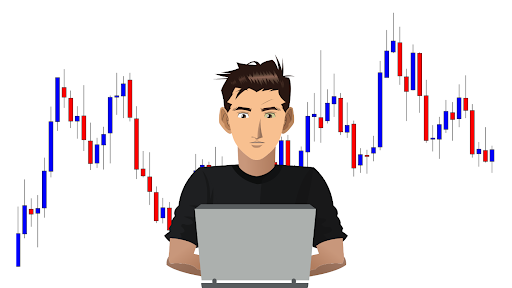Let's look at a trading strategy for forex in just 5 easy steps.
Step 1: Decide which currency pair to trade.
The four most important currency pairs Which strategies are the most frequently utilized in forex trading?
The euro and the dollar are quoted as EUR/USD.
The Japanese yen is quoted as USD/JPY.
British pound sterling and the U.S. dollar are quoted as GBP/USD.
The U.S. dollar is quoted as USD/CHF.
There are other additional currency pairings, but the same strategies apply to all of them.
Step 2: Watch for a clear trend to emerge.
To make things easier, you may learn how to recognize two opposing patterns before you initiate a deal.
If an upward trend develops, you should buy the corresponding currency pair. You should, in this instance, BUY EUR/USD. For instance, if you had purchased some EUR/USD at, let's say, 1.1400. You might close the trade at a profit by watching it rise to 1.1700. This results in a profit of 300 pip. It is based on the amount you purchased at 1.14, can equal multiple dollars.
If a downturn develops, you should sell the currency pair or go short on it. You will, in the following instance, SELL EUR/USD.
For instance, assume that you sold some EUR/USD at, let's assume, 1.0700. You might close the transaction at 1.0500 and benefit from the decline. This will represent a profit of 200 pip. Therefore, it is based on the amount you traded at 1.0700, can equal multiple dollars.
Step 3: Before you actually execute the transaction, set your TP and SL prices.
Assuming you choose to BUY EUR/USD at 1.1400 in Step 2 above, you may set a take-profit (TP) target 300 pip higher at a price of 1.1700.
However, there is no guarantee that it will reach your take-profit price. Therefore, you must always set a stop loss price concurrently in the event that the trend abruptly shifts and moves in the other direction. So, at 1.1500, or 100 pip, you may set a stop loss price.
Step 4: Split up your investing cash into at least three equal halves.
If your beginning capital is $2,000, it would be foolish to invest all of it in one deal with the expectation that you will profit from it. You may lose a lot of money on the deal, which would force you to stop trading completely. Each trader has a preferred method for allocating their funds. Most "textbooks" suggest merely putting 1% to 3% of your trading money at risk.

Step 5: Simply keep patiently watching for the take profit or stop loss to be reached.
It is more likely that you will gain money than lose it if you go with the trend. It means buying when the market is rising and selling when it is falling. The above is related to the mentality and conduct of traders as well as the momentum of deals. More purchasers will raise prices as soon as more individuals believe that the value of the currency is increasing. As a result, the upswing chart is created.
On the other hand, if more traders believe an exchange rate will decline, they are more likely to sell. As a result, the currency pair will decline more and further, creating a downtrend.

